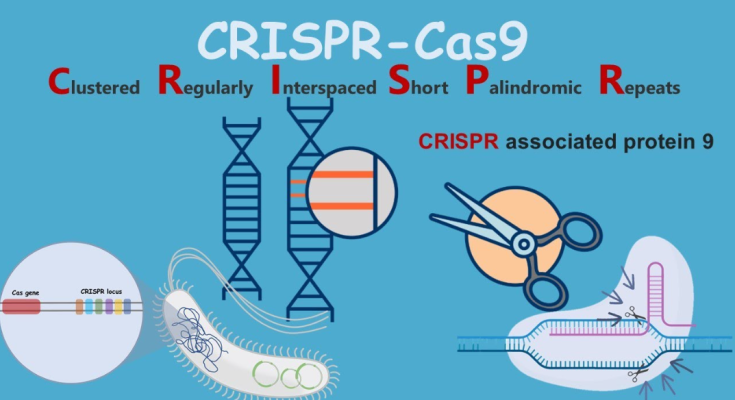Breakthroughs in CRISPR Technology: Gene Editing’s Potential and Ethical Considerations
Introduction:
CRISPR (Clustered Regularly Interspaced Short Palindromic Repeats) technology has revolutionized the field of genetic engineering, offering unprecedented precision and efficiency in editing the DNA of living organisms. Originally discovered as a bacterial immune system, CRISPR has been adapted into a powerful tool for editing the genetic code of plants, animals, and even humans. While CRISPR holds immense promise for treating genetic diseases, enhancing crop yields, and advancing scientific research, it also raises profound ethical questions and concerns about the implications of altering the human genome. In this article, we will explore the breakthroughs in CRISPR technology, discuss its potential applications and ethical considerations, and examine the ongoing debate surrounding gene editing.
1. Understanding CRISPR Technology:
a. How CRISPR Works:
CRISPR technology utilizes a naturally occurring bacterial defense mechanism to target and edit specific sequences of DNA. The CRISPR system consists of two main components: a guide RNA (gRNA) that directs the Cas9 enzyme to the desired DNA sequence, and the Cas9 enzyme that acts as molecular scissors to cut the DNA at the targeted site. Once the DNA is cut, the cell’s natural repair mechanisms can be harnessed to introduce desired genetic changes, such as gene knockout, insertion, or modification.
b. Advantages of CRISPR:
CRISPR offers several advantages over previous gene editing techniques, including higher efficiency, greater precision, and lower cost. CRISPR is highly versatile and can be used to edit the genomes of a wide range of organisms, from bacteria and plants to animals and humans. The simplicity and accessibility of CRISPR technology have democratized genetic engineering, allowing researchers around the world to conduct experiments and develop new therapies with relative ease.
2. Breakthroughs and Potential Applications:
a. Medical Breakthroughs:
CRISPR holds tremendous promise for treating genetic diseases and disorders by correcting or modifying faulty genes. Researchers are exploring CRISPR-based therapies for a wide range of conditions, including cystic fibrosis, sickle cell disease, muscular dystrophy, and certain types of cancer. CRISPR has the potential to revolutionize personalized medicine by enabling targeted gene therapies tailored to individual patients’ genetic profiles, offering new hope for patients with previously untreatable diseases.
b. Agricultural Innovation:
In agriculture, CRISPR technology has the potential to enhance crop yields, improve nutritional value, and increase resistance to pests, diseases, and environmental stressors. Researchers are using CRISPR to develop genetically modified crops with desirable traits, such as drought tolerance, disease resistance, and enhanced nutritional content. CRISPR can also be used to accelerate the breeding of livestock and poultry with desired traits, such as disease resistance, growth rate, and meat quality, leading to more sustainable and resilient food systems.
c. Environmental Conservation:
CRISPR technology has applications in environmental conservation and biodiversity preservation by enabling targeted gene editing in endangered species and ecosystems. Researchers are exploring CRISPR-based strategies for conserving threatened species, restoring degraded habitats, and combating invasive species and pathogens. CRISPR can be used to remove harmful genes from populations, reintroduce beneficial traits, and enhance the resilience of ecosystems to climate change and other environmental stressors.
3. Ethical Considerations and Controversies:
a. Human Germline Editing:
One of the most contentious ethical issues surrounding CRISPR technology is the prospect of editing the human germline, which involves making heritable genetic changes that are passed on to future generations. While germline editing holds potential for preventing inherited diseases and genetic disorders, it also raises profound ethical concerns about safety, consent, equity, and the potential for unintended consequences. The prospect of designer babies and genetic enhancement poses ethical dilemmas about the boundaries of genetic manipulation and the implications for human identity and diversity.
b. Off-Target Effects and Safety Risks:
CRISPR editing is not without risks, as it can lead to unintended genetic changes and off-target effects that may have unpredictable consequences for the health and well-being of organisms. Researchers are working to improve the specificity and accuracy of CRISPR technology to minimize off-target effects and enhance safety. However, concerns remain about the potential for unintended mutations, genetic mosaicism, and long-term health risks associated with CRISPR-based therapies, particularly in the context of human gene editing.
c. Equity and Access:
The widespread adoption of CRISPR technology raises concerns about equity, access, and disparities in healthcare, agriculture, and environmental management. Access to CRISPR-based therapies and interventions may be limited by factors such as cost, availability, regulatory barriers, and disparities in healthcare infrastructure and resources. There is a risk that CRISPR technology could exacerbate existing inequalities and widen the gap between the haves and have-nots, particularly in low-income and marginalized communities.
4. Regulation and Governance:
a. International Oversight:
The rapid development and dissemination of CRISPR technology have prompted calls for international oversight and regulation to ensure ethical and responsible use of gene editing techniques. International organizations, such as the World Health Organization (WHO) and the United Nations (UN), are working to establish guidelines, standards, and norms for the ethical and safe use of CRISPR technology in research, medicine, agriculture, and environmental conservation.
b. Public Engagement and Dialogue:
Public engagement and dialogue are essential for addressing the ethical, social, and cultural implications of CRISPR technology and fostering informed decision-making and policy development. Stakeholders, including scientists, policymakers, ethicists, and the general public, must be engaged in discussions about the benefits, risks, and ethical considerations of gene editing, and their voices should be taken into account in shaping policies and regulations governing CRISPR research and applications.
Conclusion:
CRISPR technology holds immense promise for addressing some of the most pressing challenges facing humanity, from treating genetic diseases to enhancing food security and biodiversity conservation. However, the ethical implications and controversies surrounding CRISPR require careful consideration and deliberation by scientists, policymakers, and society as a whole. By balancing the potential benefits of CRISPR technology with ethical considerations, regulatory oversight, and public engagement, we can harness the power of gene editing for the greater good while minimizing the risks and pitfalls of genetic manipulation.
For more information visit: elmzaango.com
For more information visit: newsburing.com
